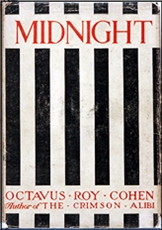Sun 11 Jan 2009
A Movie Review by Mike Tooney: CRIME AGAINST JOE (1956)
Posted by Steve under Mystery movies , ReviewsNo Comments
CRIME AGAINST JOE. Bel-Air Productions/United Artists, 1956. John Bromfield, Julie London, Henry Calvin, Patricia Blake, Joel Ashley, Robert Keyes, Joyce Jameson. Screenwriter: Robert C. Dennis, based on a story by Decla Dunning. Director: Lee Sholem.

Crime Against Joe is a flick with some nice moments; those who classify it as film noir, however, overstate the case. It should be of interest to many of you mainly because it is a whodunit.
Joe (John Bromfield) is an unsuccessful artist (who would be a starving artist if his mother didn’t support him); he gets rip-roaring drunk one night and motors to a local drive-in restaurant where young and attractive “Slacks” (Julie London) works. She talks him out of any more drunk driving; Slacks calls for their mutual friend Red the cabbie to take Joe home.
Instead, Joe insists on being taken to a local nightclub, where he has a brief encounter with the chanteuse. The barkeep hauls him outside and punches him, and he collapses in a dusty heap; Joe is barely aware of a man later known as “the cowboy” who helps him to his feet.
Without a car, Joe staggers off and encounters a young woman walking in a daze; he helps her to her house nearby, where her father expresses his gratitude. Still thoroughly drunk, Joe wanders away before the father returns to the front door.
The next morning, Joe, nursing the mother of all hangovers, is confronted by a police lieutenant; it seems that at the same time Joe was out and about, the chanteuse was getting herself murdered. Joe is now the prime suspect; down at the station, he can’t believe it when just about everyone he encountered that night — but especially the barkeep and the father of the dazed girl — lies about having seen him.
Only Slacks is willing to alibi him, but she tells a lie in doing so. At least it gets Joe out of the clink; he turns (not very good) amateur sleuth and along with Slacks begins narrowing down a list of 87 possible suspects to just four. What he doesn’t know until it’s almost too late is that the real killer isn’t one of those four ….

Clearly this was a low-budget production; every scene was filmed in an actual location, and I doubt if any money was spent on set construction. The lack of money may or may not explain the muddled script; an attempted murder is shown and never referred to again. And the director does a poor job at times: When the killer is confessing, instead of a closeup showing that person’s remorse we get a medium-longshot in profile (not much information content).
The violence content is also low: We never see the murder or even the face of the victim. A later scene with the killer is actually more effective because of the way it is shot: Someone is climbing a staircase and the audience sees the killer only in silhouette raise a club and bring it down out of camera range; this victim then tumbles noisily down the stairs, giving Julie London an opportunity to emit a piercing scream.
Crime Against Joe could have been a great film, but the low budget sabotaged it. Still, it is a whodunit; the murderer’s identity is withheld until the last possible moment. And how many mysteries — filmic or otherwise — have been solved by the sleuths rummaging through the permanent academic records of high school students?
* * * * * * * * * * * * * * *
I remember John Bromfield primarily from his TV series Sheriff of Cochise (1956-58):

Beside recording 32 albums as a singer, co-star Julie London had a long Hollywood career:

* * * * * * * * * * * * * * *
“What’s your attitude about girls, Joe?”
“I think they’re here to stay.”
* * * * * * * * * * * * * * *
“Slacks, are you a nice girl, Slacks?”
“Well, either way I wouldn’t want it known.”
* * * * * * * * * * * * * * *
























